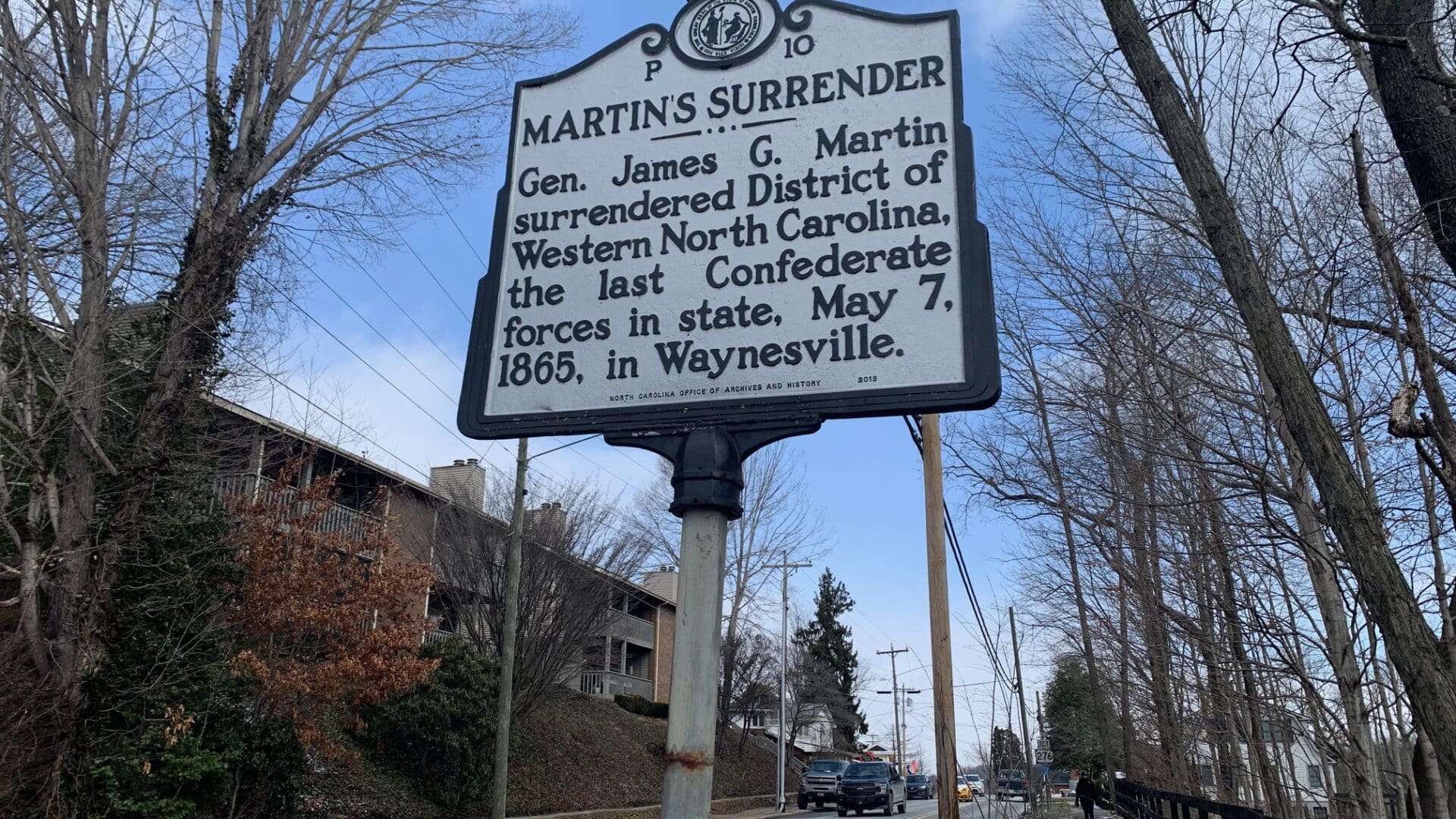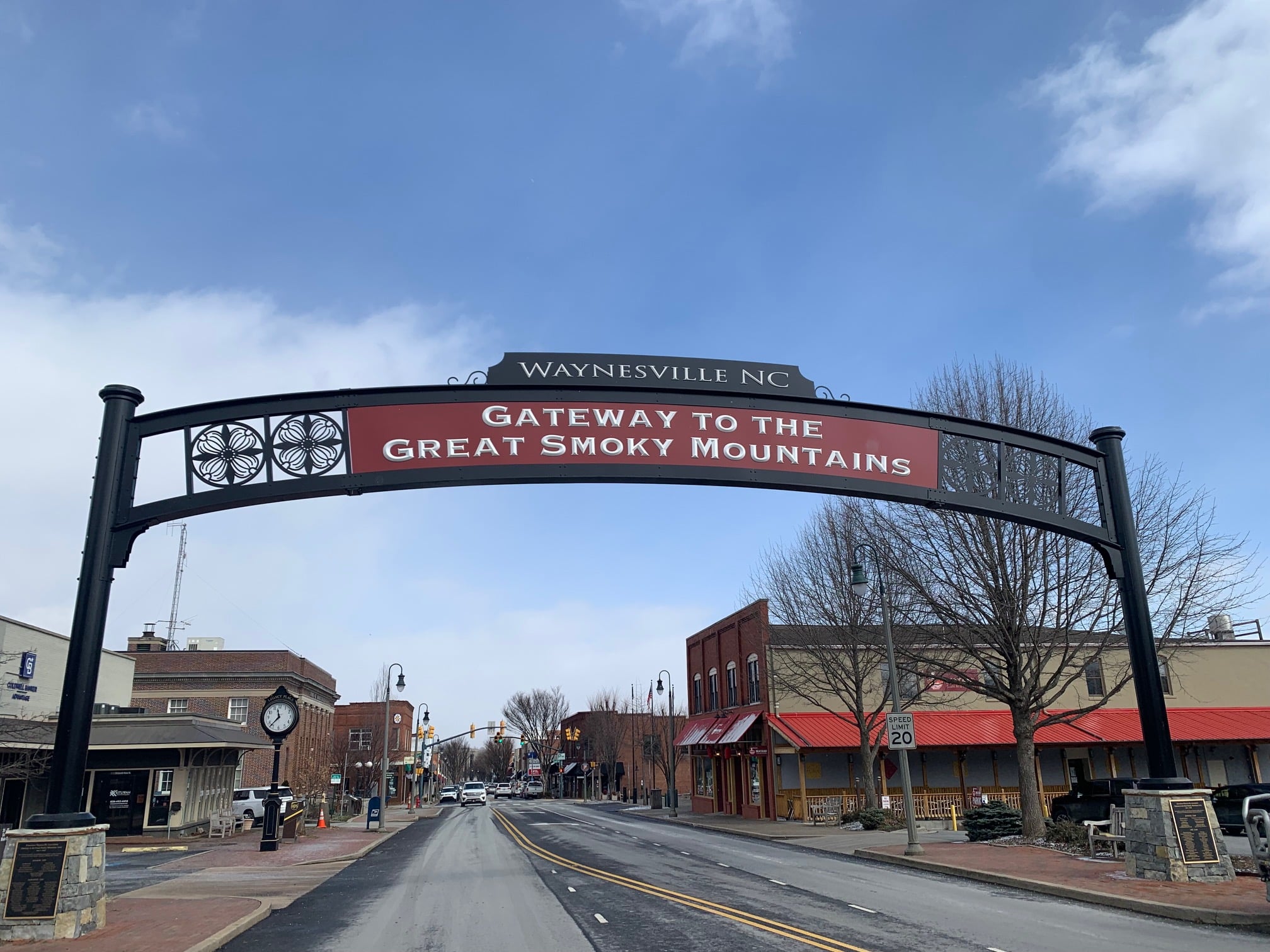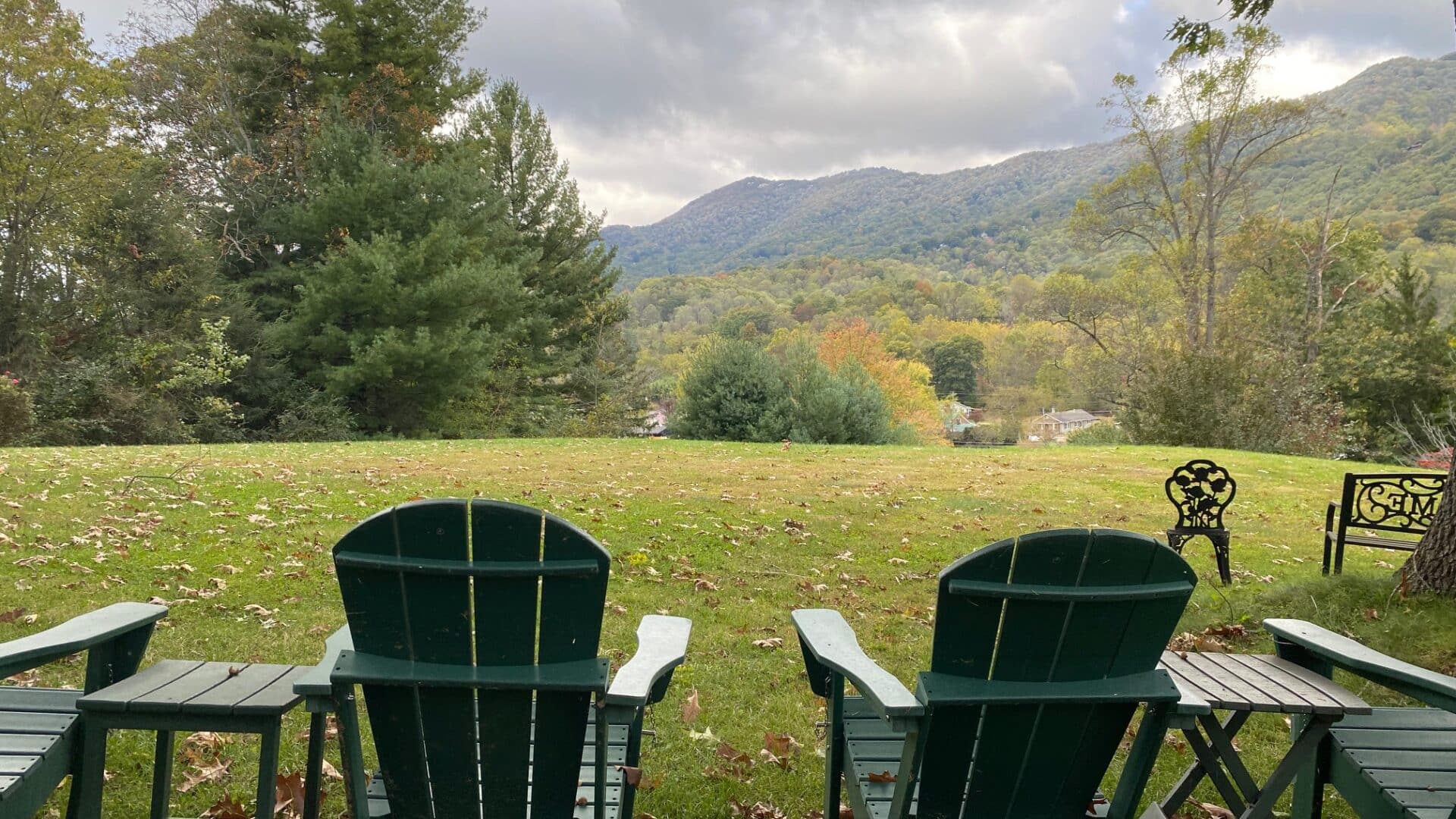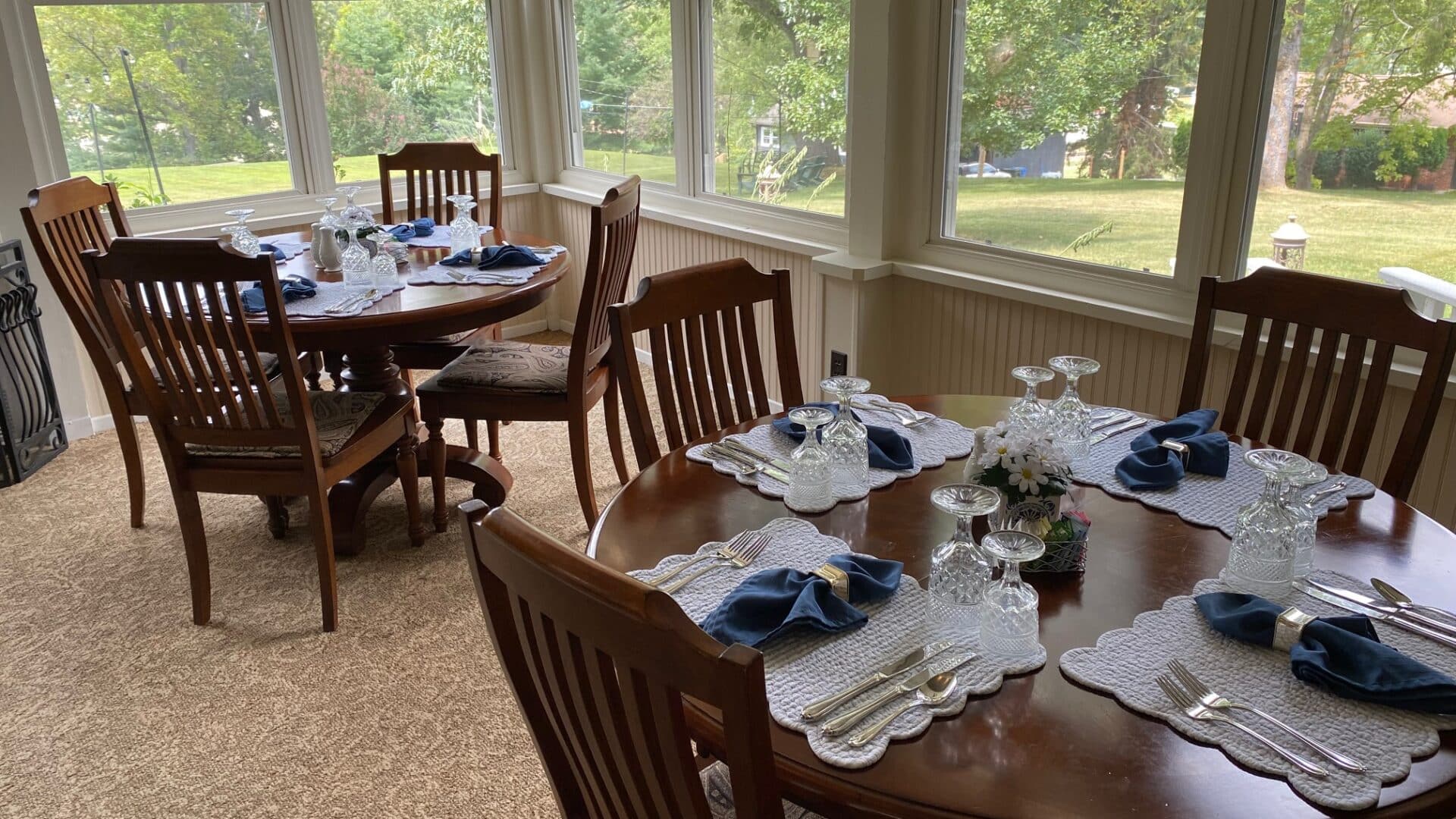As we’ve previously mentioned, Waynesville and the towns around Waynesville have a rich culture and a unique past that helped shape and define the region into the destination it is today. We know many folks love to travel and learn about the history of an area and the Haywood County towns and places of Waynesville, Maggie Valley, Canton, Clyde, Lake Junaluska, and Cataloochee Valley all have their unique contributions to the history of this mountain paradise. We’ve assembled a brief history of these areas to highlight some of the fascinating stories and achievements and to acquaint you with our wonderful county. Plus, we’ve linked to some amazing resources that help tell the story! Since our Inn is located in Waynesville, we’ll start there. Please note that for all these areas, we’ve focused on the history of the area after the Revolutionary War, but it must be said that the original inhabitants of most of these areas before and during European colonization included many different indigenous and Native American people, including the Cherokee, who have a rich history in this region. We highly recommend a trip to the Museum of the Cherokee People in Cherokee, just a short drive from the Inn through beautiful mountainous landscape.
WAYNESVILLE
Waynesville was founded in 1810 by Colonel Robert Love, an American Revolutionary War soldier who donated the land for some of the first town buildings. The Love name also adorns one of the oldest known residential streets in Waynesville called Love Lane, which runs just north of the Frog Level district and overlooks the downtown area. The town, originally called Mount Prospect, was renamed Waynesville, and subsequently incorporated in 1871. The Waynesville name derives from “Mad” Anthony Wayne, Love’s commander in the Revolutionary War. Check out the link to this Mountaineer article with a further backstory on the namesake of our town. We also have a business in town named after Anthony Wayne, which is the Mad Anthony’s Tap Room on Legion Drive.
During the Civil War, it is said that one of the last skirmishes of the war took place in Waynesville only a short distance from the Inn. In May of 1865, Union and Confederate soldiers met in a field near a natural sulfur spring (now in a residential area about a quarter mile from the Inn on Sulpher Springs Road). The Union forces apparently retreated to downtown Waynesville, but the Confederate forces subsequently surrendered after hearing about the news of Lee’s surrender at Appomattox. Some have claimed that the last shots taken in the Civil War were during this skirmish, but this claim is unsubstantiated.
After the war, the railroad boom put Western North Carolina more on the map. The rise of the lumber industry was facilitated by the development of railroad infrastructure in the area (a fascinating read on the history of the railroad’s development in our region is Smoky Mountain Railways, by Jacob and Bob Plott). The history of the Andon-Reid Inn is linked to the lumber industry, as the original architect and builder of the house in 1902 was an influential member of the lumber industry. These investments and new industries brought new growth and tourism to the area as the region was better connected to the rest of the state and was known as a climate haven for those looking to escape the heat of the south and enjoy what many believed were the “healing” effects of mountain air and environment at the time.
More recently, Waynesville merged with the small town of Hazelwood in 1995, referenced in this article clip from the Asheville Citizen-Times, which is a relatively small area, but was an industrial engine for the region during the 1900s. And just last year, Waynesville reintroduced the “Gateway to the Great Smoky Mountains” arch on Main Street, which is a throwback to an arch that stood on Main Street in the mid-1900s and has its own unique history and nostalgic charm for residents and visitors alike.
MAGGIE VALLEY
Maggie Valley was incorporated as a town in 1904 and the story of how the town was named is described in this post from the Maggie Valley Chamber of Commerce. The story goes that the town was named after Maggie Mae Setzer, the daughter of one of the original residents of the area who wanted to establish a post office for the area. To this day, Maggie Valley holds up “Miss Maggie” as their town mascot and as a symbol for the town. Maggie Valley was originally land of the Cherokee (and a vibrant elk population) and its growth as a resort and tourist town was inextricably linked to the development of the Ghost Town in the Sky theme park which opened in 1961 and attracted over 600,000 visitors per year in its heyday! The park was a regional treasure but now sits idle, involved in protracted legal disputes. Many in the region hope that one day, the Ghost Town property will be reimagined into something else that will honor the original. Maggie Valley is also known to be the home of one of the most notorious bootleggers, Popcorn Sutton. Much has been written about Popcorn Sutton, but we like the book called North Carolina Moonshine, which has a detailed history of how moonshining impacted our state. Back to today, Maggie Valley is most well-known for its vibrant year-round festivals, proximity to Cherokee and the Blue Ridge Parkway, plus the popular Cataloochee Ski Area.
CANTON
The history of the town of Canton is defined by the development of industry along the major river in Haywood County, the Pigeon River. Founded in 1889, it went through various names before it was called “Canton”, apparently in reference to the town of Canton, Ohio where the steel came from for various bridges in town. Ohio is a big part of the history of Canton as the town’s location along the river and close to many large forests invited industrialists from Ohio to start a paper mill along the river adjacent to the current downtown area. Much has been written about the paper mill in Canton, as it has gone through multiple owners in the past 125 years and recently shut down in 2023, which was a major economic blow for our area. The mill was the largest employer for Haywood County, and multiple generations of families found their livelihoods through the mill. The Forest History Society has a great breakdown of the history of the Canton Paper Mill.
Thankfully, the mill property was just recently sold to a new developer, who plans to redevelop this massive property into a mixed-use site and hopefully revitalize the downtown area and bring new businesses and industry to Haywood County. The town is quite excited about reimagining Canton and taking advantage of the tourism and recreation potential along the gorgeous Pigeon River. It certainly feels like Canton is rewriting its history as we speak and it’s exciting to watch the town develop after so many years of economic uncertainty.
CLYDE
The town of Clyde is a small town between Waynesville and Canton, and they describe themselves as a “bedroom” community where most folks who live there work in the surrounding towns. The town’s website has a great description of the history of the town, and we particularly enjoy the bits about how the town was named. While it’s still unclear how exactly the town came to be named Clyde, it’s interesting that one of the options is similar to the story about the naming of Canton, where the name potentially came from the name of the Ironworks factory in Ohio where the steel came from for bridges in the town. Also, Clyde is the home of one of the great places to learn more about Haywood County History, at the Museum of Haywood County History in the Shook-Smathers House, which is on the National Registry of Historical Places.
LAKE JUNALUSKA
Lake Junaluska is a man-made lake region just north of Waynesville and is an unincorporated “Census Designated Place” owned by the Lake Junaluska Assembly. The lake was man-made from damming Richland Creek; the creek that runs all the way through downtown Waynesville to Lake Junaluska. An excellent breakdown of the history of the Lake and its various owners can be found at Wikipedia. Over time, the Lake has become a conference and retreat center and has gone through many different ownership structures, including as the headquarters of the United Methodist Council. While no longer technically affiliated with the Methodist Council, the Lake has many facilities and hosts conferences and retreats for many in the religious community and for local events. Lake Junaluska and Waynesville have explored a merger in the past or annexation of the Lake into Waynesville, but nothing has ever come to fruition on that front. The name “Junaluska” is a Cherokee name and comes from nearby “Mount Junaluska”, which has since been renamed North Eagles Nest Mountain (the mountain view you can see from the lawn and patio and rooms at the Inn!).
CATALOOCHEE VALLEY
And not to be forgotten, Cataloochee Valley, in the Great Smoky Mountains Park, is an area in our county with a rich history. The Cataloochee Valley region of the park is known for its beauty and its historical buildings, harkening back to early settlers of the area and former residents that were forced out of the area upon creation of the National Park. The National Park Service has a history of the Valley and the residents that lived there. Each year, former Cataloochee residents have a reunion to celebrate their heritage in the region.
We hope you enjoyed reading and digging into the history of our area as much as we enjoyed putting it together! This region is chock full of culture and history. Other places to explore in our area for great history lessons include the Museum of the Cherokee People in Cherokee, the Shelton House Museum of North Carolina Handicrafts, The Biltmore Estate, The Folk Art Center on the Blue Ridge Parkway and the Cradle of Forestry.
We hope to see you soon at the Inn!
Your Innkeepers,
–Brenda and Peter




